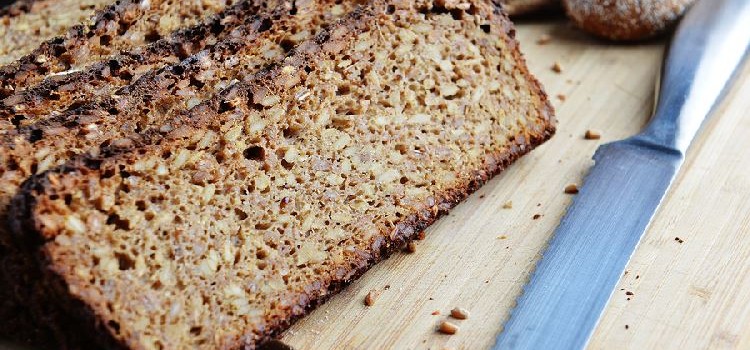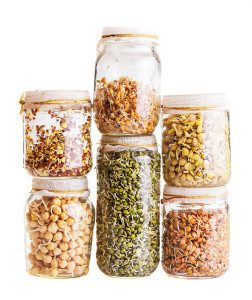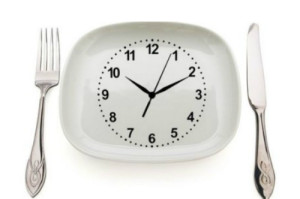

Ezekiel Bread vs. Whole-Wheat Breads: Which is Healthier?
Ezekiel bread may stem from biblical times, but health-conscious trendsetters are taking it on in the 21st century.
Its trove of diverse ingredients and sprouted whole grains make an excellent case for it being the healthiest bread around, right?
But wait — what about the aisles full of healthy breads in the health food stores? Is Ezekiel bread really the best we have to offer, or is it just one more alternative to white bread?

What is Ezekiel Bread?
Ezekiel bread is the only recipe you’ll get out of your local bible study group. Originally referenced in the Hebrew Bible, verse Ezekiel 4:9. The bread was intended as a symbol of what will nourish those starving while in exile: “Take wheat and barley, beans and lentils, millet and spelt; put them in a storage jar and use them to make bread for yourself.” Given the diverse number of natural ingredients, it seems to slip well into both that ancient fight for survival and today’s growing concern over the choices we make each day.
Think over that list of ingredients again: wheat, barley, soybeans, lentils, millet, and spelt. All in all you’re taking in four grains and two legumes, which is more than you can say for most breads. These grains and legumes form a complete protein, leaving no need for artificial sweeteners or preservatives.
Ezekiel bread has a low glycemic index. A glycemic index, also known as a GI, is what we use to measure how long it takes for carbohydrates to be broken down into simple sugars. A high GI means that you’re left feeling hungry faster, and you may feel tempted to take in more carbs between meals. A low GI, like what’s found in Ezekiel bread, will break down these carbohydrates very slowly. If you have a slice of Ezekiel bread with your breakfast, it will continue to slowly release sugar into your bloodstream for hours afterwards. That means no sugar-high, and you’re less likely to fall for a mid-morning cupcake.
There is far more to say on the nutritional value of Ezekiel bread, and we’ve actually already said it. (See this article to learn more). The short version is that Ezekiel bread brings with it a long list of nutritional benefits, such as amino acids, fiber, vitamins, and minerals.
But what really sets it apart from other healthy breads are Ezekiel bread’s sprouted whole grains.
What are Sprouted Whole Grains?
Sprouted whole grains (also known as SWG) are what should happen to any grain in the right environment—it’s a completely natural process that maximizes the health benefits that you can get out of your choice of bread. The difference is that most grains are not processed in that right environment.
If kept hydrated and given the proper space, a grain can become a sprouted whole grain—that is, somewhere halfway between being a grain and a plant. It’s really just a sprout, just the beginnings of something that you choose to consume, as is, instead of planting it in the backyard. But that change makes all the difference when it comes to your health.
There are two primary benefits to consuming sprouted whole grains.
- They increase the amount of nutrients, and
- They reduce the amount of anti-nutrients.
Because of the sprouting process, sprouted whole grains are found to have a higher amount of the amino acid lysine. They have an increased quality of protein, as well as significant increases in the amount of soluble fiber, folate, Vitamin C, Vitamin E, and beta-carotene present. Because sprouting breaks down the starch in grains, sprouted whole grains have fewer carbohydrates than other grains.
As for the decrease in anti-nutrients, we have to start from the beginning. Plants, like other forms of life, don’t “like” to be eaten. (At least, evolutionarily, it doesn’t benefit them). To combat that, many plants have anti-nutrients that are meant to discourage animals from choosing them as sustenance. Those same anti-nutrients that turn away animals are not ideally suited for our own bodies, and though cooking them can improve the situation these anti-nutrients are still present in some form.
When a grain is allowed to sprout, this process lowers the amount of anti-nutrients present. It also lowers the amount of gluten, making it more tolerable for those with mild non-celiac gluten sensitivity, while still not a possibility for those with celiac disease. Because of this reduction in anti-nutrients, however, at the end of the day, Ezekiel bread is far easier for most people to digest than breads made with non-sprouted grains.
What Kinds of Bread are Healthy?
The bread section in today’s health food stores is a utopia unlike anything our ancestors could have imagined. We may come from people who were focused on taking in as many calories as they could—thinking in terms of survival rather than long-term health benefits or the measurements of their waistlines—but you wouldn’t know it from the choices we have today. “Healthy breads” seem to mean anything, really. You could pick up anything but a loaf of white bread and come away feeling like you’ve made a good choice: potato bread, whole wheat bread, rye bread, flatbread…
There are hundreds of options out there that aren’t the ill-advised white bread of our youth. And yet, are they really all the same?
Of course not. When there is money to be made in an industry, as there certainly is today in the growing health-foods movement, you need to develop a healthy sense of skepticism. (organicallyblissful.com) White bread vs. whole wheat bread may sound like an easy decision. But is it? What about wheat bread vs. Ezekiel bread?
The answer is actually more complicated than marketers may like you to think. People tend to spend extra on whole wheat bread, and that cost is considered worthwhile because of the health benefits they hope to be bringing in when they make that decision. But in actuality, more often than not there is not much of a difference at all between whole wheat bread and white bread.
For more than fifty years now, we have been well aware that humans cannot digest most parts of nutritional fibers. And yet they still manage to benefit our health, and particularly the digestive system. Insoluble fibers can reduce the risk of constipation, diverticulosis, and even colon cancer. Soluble fibers—that is, fibers that we are able to digest—can lower our risk of obesity and diabetes. Clearly, both kinds of fibers are important.
In order to increase the perceived health benefits of whole wheat breads, bread companies will often add these two kinds of fibers to their processed bread recipes. While yes, you do take in the fiber, it is a sore replacement for a natural version such as sprouted whole grains.
Researchers have found that there is no significant difference between the glycemic index of white bread and the glycemic index of whole wheat bread. Meaning, if you eat a piece of whole wheat toast for breakfast then you won’t get noticeably more mileage out of it than you would a piece of toast made out of white bread. This is especially bad news for diabetic and pre-diabetic people, who may have counted on whole wheat bread as a healthier alternative to white bread.
We could argue the merits of whole wheat bread vs. white bread all day, but in the end it would not get us anywhere statistically significant. The benefits just aren’t strong enough, and it probably isn’t worth the extra money if you aren’t going to walk away with a superior product. We can, however, leave those two behind. One kind of nutritious bread that is healthier in a long-term and meaningful way is bread made with sprouted whole grains. That’s all there is to it.
Unlike the misleading advertisements you may have come across for regular whole wheat bread, you can’t fake a sprouted whole grain. The United States Food and Drug Administration has strict regulations in this area, and does not allow companies to claim that their products are made with sprouted whole grains unless at least 51% of the grains are in fact whole. When you’re shopping, pay attention to labeling and look for “100% whole grain.” This will assure you that the product has a full serving of whole grain in each serving.
The structure of sprouted whole grains, combined with their collection of vitamins, minerals, and phytochemicals, offer nutritional benefits that would not be on the table if those same grains were refined and enriched.
When you choose sprouted whole grains over processed grains, you feel fuller for longer and lower your cholesterol over the long-term. You are at a lower risk of diabetes, and the fact that you feel fuller for a longer period between meals may relieve you from the significant stress of sugar rushes and cravings for unhealthy foods throughout the day. It’s true that choosing whole wheat bread over white bread won’t go beyond the call of duty for your health, but simply making the switch to sprouted whole grains can introduce nutritional benefits that will long outlast the wheat-vs-white debate.
Watch our presentation for helpful weight loss information
Sources
Is Whole Wheat Bread Actually Healthier than White Bread? In: Articles. Trimdownclub.com. 2013 Dec 13. Retrieved 2015 Oct 17.
What is Ezekiel Bread and How to Make it at Home In: Articles. Trimdownclub.com. 2015 Sept 17. Retrieved 2015 Oct 17.
Ezekiel 4:9.In: About. Foodforlife.com. Retrieved 2015 Oct 17.
Gunnars, K. Why Ezekiel Bread is The Healthiest Bread You Can Eat. Authoritynutrition.com. 2013 Sept. Retrieved 2015 Oct 17.
Comments 8
Leave a Reply
You must be logged in to post a comment.




Can I substitute the keto bread with Ezekiel bread? And if yes, how many slices per serving?
Hi, Debthorpe2009. Ezekiel bread is not keto-supportive, sorry. It has a relatively low glycemic index, but is still too high in carbohydrates to be a swap for keto bread on a keto plan.
Is whole wheat products the same as whole meal? I’ve been buying whole meal and revitalise whole grain crackers. Is there any advice out there for me.
Hi, lulu. It should be, but it is always good to read the list of ingredients on the package to be sure refined flours haven’t been added.
What five foods. I am not a fan of the video that never says anything.
Hi, Sweetashoney. The 5 foods noted in the presentation are simply examples of popular foods relied up on to be healthy but whose most commonly found versions have been manipulated into working against health and healthy weight management (the examples were regular margarine, regular “wheat” bread, artificial sweeteners, regular store-bought orange juice, and overly-processed non-organic soy). Our program encourages use of whole, unrefined, and relatively unprocessed foods, a strategy accepted by leading health institutions and organizations to be an effective strategy for fat loss and health maintenance.
actually i would like to ask a question. my last A1C was 14.5 which was in January 2016. i have switched to low carb breads that i really like. what do you think? my main goal at this point is to lower that A1C. Help!
Hi, mamadiaz. If the low-carb breads are based on whole, unrefined and non-processed ingredients (and don’t include hydrogenated fats) they are fine. If you would like to list the specific types you use, I would be happy to give more specific feedback.